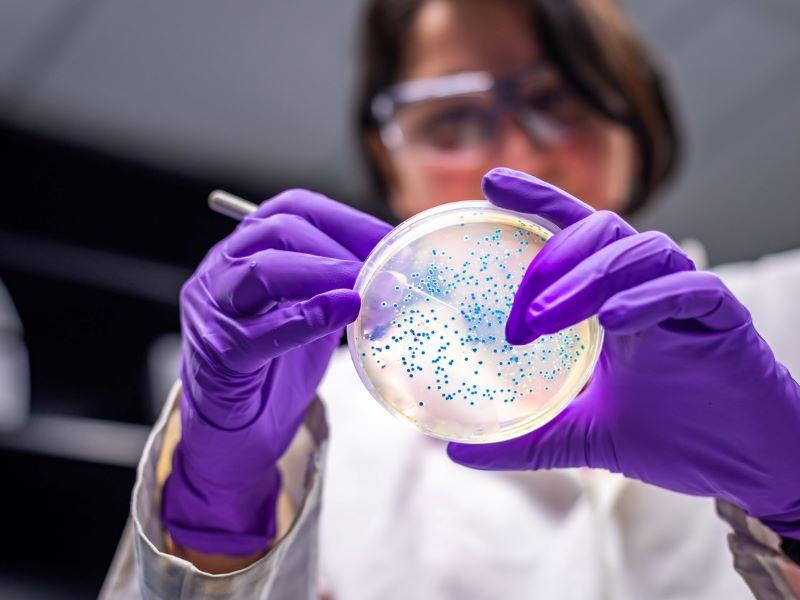Any organisation that wants to make progress needs to embrace change. The same goes for academic research groups that aim to make a contribution to science. Often, change is needed not because things are not working well but because they could work even better. But change takes time. In an academic research group, most of the participants are students who will spend only a few years in the lab, so there is less time to change mentalities, attitudes and culture.
Change also requires self-motivation. With an academic research group, often the remuneration factor is missing, leaving the leader of such a group to develop other incentives for students. In a way, this is a welcome challenge since it allows professors to design a motivational pathway in which personal financial gain can be put aside, leaving a purer goal of “research for the sake of research” (or “for the sake of society”). Or to become the best one can be in a particular research niche.
So how can we implement change efficiently in an academic research group? In the first of a two-part series, I’ll use McKinsey’s 7-S framework, typically used to analyse businesses, to explore this.
Understanding the pieces of the puzzle
One prerequisite for change is a better understanding of the components of an organisation, whether it is a large company or a small research group. Change may occur in different aspects of an organisation, so it is important to be aware of the components that change affects and the interplay between them. This is where one of my favourite business frameworks comes in handy: McKinsey’s 7-S framework. The seven s’s in this model of organisational effectiveness stand for strategy, systems and structure (the so-called hard s’s), while the soft s’s are staff, skills and style. The remaining s stands for shared values and acts as the glue holding the soft s’s and hard s’s together.
I will discuss the hard ones first. It is critical to first define a clear strategy for yourself as a researcher and for your research group or, in other words, a set of answers to the questions:
- Who are we addressing?
- What is our value proposition (or research target)?
- How are we going to carry out the research?
- And, quite importantly, why?
We need systems to provide stability and coherence, and they need to be in place, even if roughly at the beginning, for recruiting and training new students, reporting and giving feedback and supporting other administrative tasks.
Structure helps everyone understand their responsibilities. In my group, I task the students with planning and executing the projects and the staff with supporting the administrative aspects. The professor’s role is to provide the broader vision, strategy, funding and constructive feedback as well as (when possible) providing hands-on support to students.
- Resource collection: How to promote your research for greater impact
- No one agrees on what research leadership is, let alone how to do it well
- To improve research culture, we must change the way we measure performance
The interesting thing about the hard s’s is that they are easy to change. You can easily alter your strategy, add or remove a certain system and even modify the structure of a research group.
The soft s’s (staff, skills and style) are by nature harder to change. Staff, in the case of an academic research group, consists of students who usually voluntarily join the research line promoted by the lab. It is often the students who select the lab and not the other way around. Therefore, attracting self-motivated students does require a bit of effort. To do this it is important to emphasise the attractiveness of the research. Ways to do this include maintaining an exciting website for your lab, sharing your research in seminars and lectures and preparing informative brochures to distribute to students. A social media presence can also be an advantage if properly managed.
Skills are also difficult to change because research skills cannot be absorbed in a short time. It takes long cycles of challenges and failures to properly embed them in students’ toolboxes. Developing skills also depends on the students’ drive for self-improvement and continuous learning.
Finally, the style of a research group – the attitude and decision-making approach of senior members of the group – is difficult to define, suggesting implicitly that it is also difficult to control. It is easy to lose track of an ideal style in times of challenge, but a good motto and solid philosophy can help keep the entire group on track.
Gluing everything together with shared values
Even if we optimise components of the two categories in this framework (the hard s’s and soft s’s) a research group may contain people focused more on structure and systems or skills and style. And that is OK, as long as there is coherence throughout the system. How can you ensure this? By having the same shared values. This is truly the hardest part of building any great organisation and it is even more challenging in an academic research group with a quick turnaround.
It is hard enough to identify our own personal values, let alone those of a whole group. Listing them is not enough, they must be communicated well, too. In my lab, we have a list of about 20 rules that can be summarised as values, emphasising teamwork, respect, creativity and honesty, and many others. We display this set of rules around the lab and discuss it often so that we gradually reach a common ground of solid values that we all share. It is important to embed these values in every action we take in the lab.
The next part of this mini series will explore another framework that research group leaders can implement in an academic setting. Let’s enjoy building change for ourselves and our research environment in an efficient and impactful way. After all, as Heraclitus noticed 2,500 years ago: “The only constant in life is change.”
Daniel Moraru is an associate professor at the Research Institute of Electronics at Shizuoka University, Japan.
If you would like advice and insight from academics and university staff delivered direct to your inbox each week, sign up for Campus newsletter.




comment